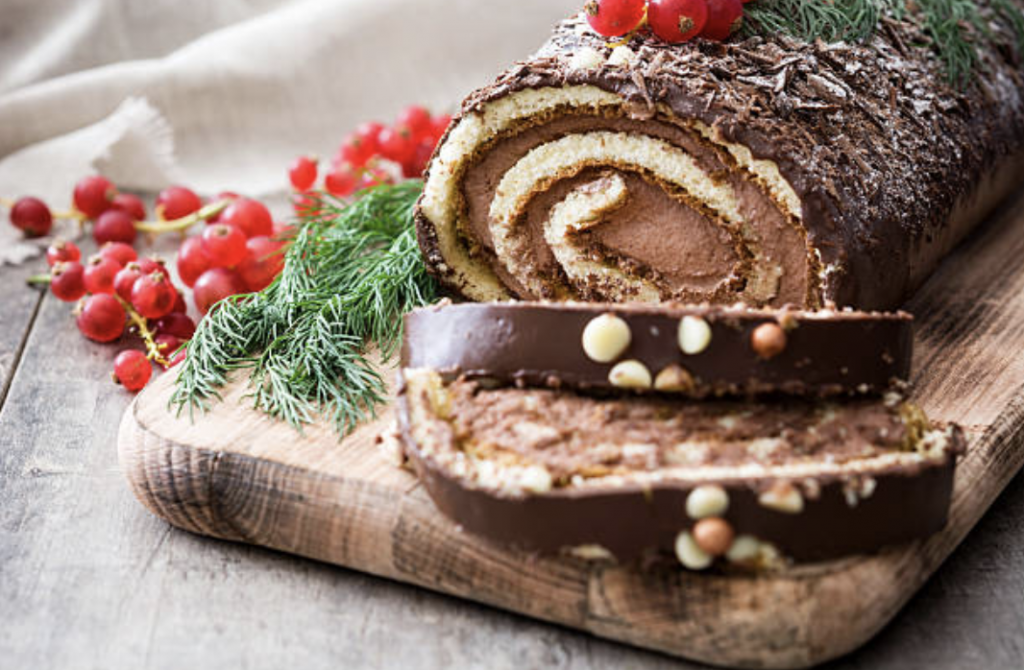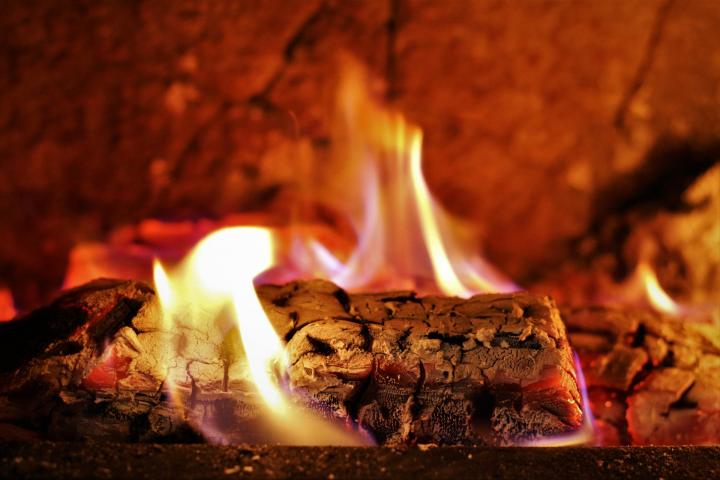During the month of December, as the longest night of the year approaches, France enters the traditional winter holiday season or les fêtes de fins d’années. This is typically a season when families come together to celebrate a series of holidays which span a period of about one month, beginning with the start of Advent (in early December) and ending with Epiphany or “Kings’ Day” (January 6). Many of the traditions observed in France during this period would be familiar to those in other European countries: the outdoor Christmas markets, the seasonal mulled wine or vin chaud, and the flurry of gift buying in crowded shopping districts.

One tradition, which is uniquely French, however, is that of the bûche de Noël or Yule log cake. This confection has many variations, but almost always involves a sponge cake rolled into a log shape, covered with chocolate ganache frosting, and decorated with various sugar accouterments, including leaves, holly berries, etc… While a hunk of wood may not seem like the most appetizing way to top off a holiday meal, the successfully executed bûche de Noël is both esthetically pleasing and delicious.

The precise origins of this traditional dessert aren’t entirely clear, but the tradition of the Yule log reaches far back into Europe’s pre-Christian past when large decorated logs (real, wooden ones) were burned in celebration of the winter solstice. These enormous, often decorated, tree trunks were burned to help ensure a successful harvest during the coming year. As with many pagan celebrations that survived the Christianization of Europe, the tradition of the Yule log has undergone a profound transformation over the centuries.

So, this holiday season, enjoy a slice of bûche de Noël at the end of your holiday meal, and take part in an ancient and delicious French tradition!
Ben is SAI’s Senior Director and serves as the Admissions Counselor for all Paris programs.


Comments
No comments yet